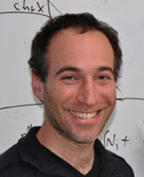
David Reich
Harvard Medical School
New Research Building, Room 260
77 Avenue Louis Pasteur
Boston, MA 02115
Tel: 617-432-6548
Email: reich@genetics.med.harvard.edu
Website:
https://reich.hms.harvard.edu/
Lab Size: Between 15 and 20
Summary
We use statistical genetics and ancient DNA to study human history and biology.
(Focus #1) Using the historical perspective to improve human health: A major focus of our lab has been to tailor methods for finding disease genes to populations of recently mixed ancestry, like African Americans and Latinos (1, 2, 3). For example, we found seven independent genetic risk factors for prostate cancer that are sufficient to explain the elevated rate of this disease in African Americans (4). We also developed EIGENSTRAT, a widely used method to correct for population stratification: systematic differences in allele frequency between cases and controls due to differences in their history that can cause false-positive associations to disease (5). A current project is motivated by the fact that thousands of groups in India have likely experienced founder events as strong as those that have occurred in Ashkenazi Jews or Finns (6). This suggests that there are likely to be many rare recessive diseases in India. Mapping and understanding these is likely to provide a major opportunity for public health improvement as well as a natural laboratory in which to study genetic disease.
(Focus #2) A new history and geography of human genes informed by ancient DNA: We have developed methods for using data from modern and ancient DNA to learn about population structure and mixture events (6, 7, 8). We have used these methods to reconstruct the deep population history of Indians (6), Europeans (7), and Native Americans (9). Using ancient DNA in collaboration with Svante Pääbo’s group, we have also found evidence for gene flow from Neandertals into the ancestors of non-Africans (10) and from ancient “Denisovans” into the ancestors of Melanesians (11; 12; 13). We completed a new ancient DNA lab in February 2013, and are using it to study DNA samples dating from the last ice age to further enrich our understanding of history.
(Focus #3) How did population mixture affect human biology? The finding that many human populations descend from population mixture events is likely to be biologically important. For example, at the time that Neandertals met and mated with modern humans, they were pre-adapted to Eurasian environments, while modern humans were likely not. Thus, modern humans could have used genetic mutations inherited from Neandertals to more quickly adapt to the new and challenging environments they were encountering outside of Africa. We are working to understand the biological impact of Neandertal mixture and other mixture events in human history.
Publications
Fu Q, Hajdinjak M, Moldovan OT, Constantin S, Mallick S, Skoglund P, Patterson N, Rohland N, Lazaridis I, Nickel B, Viola B, Prüfer K, Meyer M, Kelso J, Reich D, Pääbo S (2015) An early modern human from Romania with a recent Neanderthal ancestor. Nature Advance Online Publication
Skoglund P, Ersmark E, Palkopoulou E, Dalen L (2015) Ancient Wolf Genome Reveals an Early Divergence of Domestic Dog Ancestors and Admixture into High-Latitude Breeds. Curr. Biol. Advance Online Publication
Palkopoulou E, Mallick S, Skoglund P, Enk J, Rohland N, Li H, Omrak A, Vartanyan S, Poinar H, Götherström A, Reich D & Dalén L (2015) Complete Genomes Reveal Signatures of Demographic and Genetic Declines in the Woolly Mammoth. Curr Biol 25, 1-6.
Li H (2015) BFC: correcting Illumina sequencing errors. Bioinformatics. Advance Online Publication
Haak W, Lazaridis I, Patterson N, Rohland N, Mallick S, Llamas B, Brandt G, Nordenfelt S, Harney E, Stewardson K, Fu Q, Mittnik A, Bánffy E, Economou C, Francken M, Friederich S, Pena RG, Hallgren F, Khartanovich V, Khokhlov A, Kunst M, Kuznetsov P, Meller H, Mochalov O, Moiseyev V, Nicklisch N, Pichler S, Risch R, Guerra MAR, Roth C, Szécsényi-Nagy A, Wahl J, Meyer M, Krause J, Brown D, Anthony D, Cooper A, Alt KW & Reich D (2015) Massive migration from the steppe was a source for Indo-European languages in Europe. Nature 522, 207-211
